52nd Newport Bermuda Race starts June 17
By Barry Pickthall for WindCheck
It is one of the great classic races. The biennial Newport Bermuda Race, now in its 116th year, was first conceived back in 1906, the same year as the Transpac from San Francisco to Honolulu. Between these two pioneering events, they seeded the other great races around the globe including the biennial Fastnet Race in the UK and the annual Sydney/Hobart classic in Australia, now the grand slams of offshore/ocean racing.
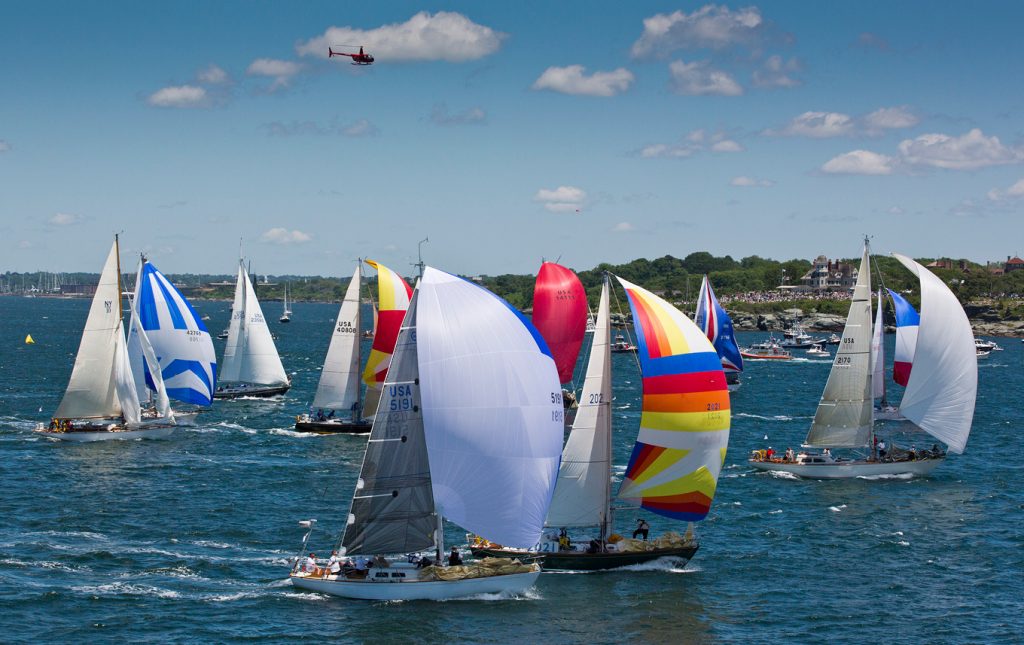
Competitors in Class 1 of the St. David’s Lighthouse Division had a downwind start in the 2012 Newport Bermuda Race. © Daniel Forster/PPL
The ‘Onion Patch’ refers to the native crop that Bermuda was once famous for before the trials of two great wars loosened the Island’s grip on the onion market supplying the major cities along the U.S. East Coast. The crop was flourishing when Thomas Fleming Day, the controversial editor of Rudder magazine, first floated the idea of extending the scope of racing small yachts beyond the immediate horizons of East Coast yacht clubs. Goaded by the opinion from the ‘armchair sailor brigade’ that it could not be done, he first organized a 330-mile race from Brooklyn, New York to Marblehead, Massachusetts in 1904. Six boats took part and Day’s 19-footer Sea Bird finished last.
The Boston and New York newspapers were scathing in their reports, saying the whole venture had been dangerous to the extreme. Day was equally forthright in his response, aiming his barbs at the established yacht clubs with their steam yachts and pompous attitudes, calling their conservative members “Carpet admirals and grey-bearded, rum-soaked piazza yachtsmen who spend their days swigging booze on the front steps of their clubhouse.”
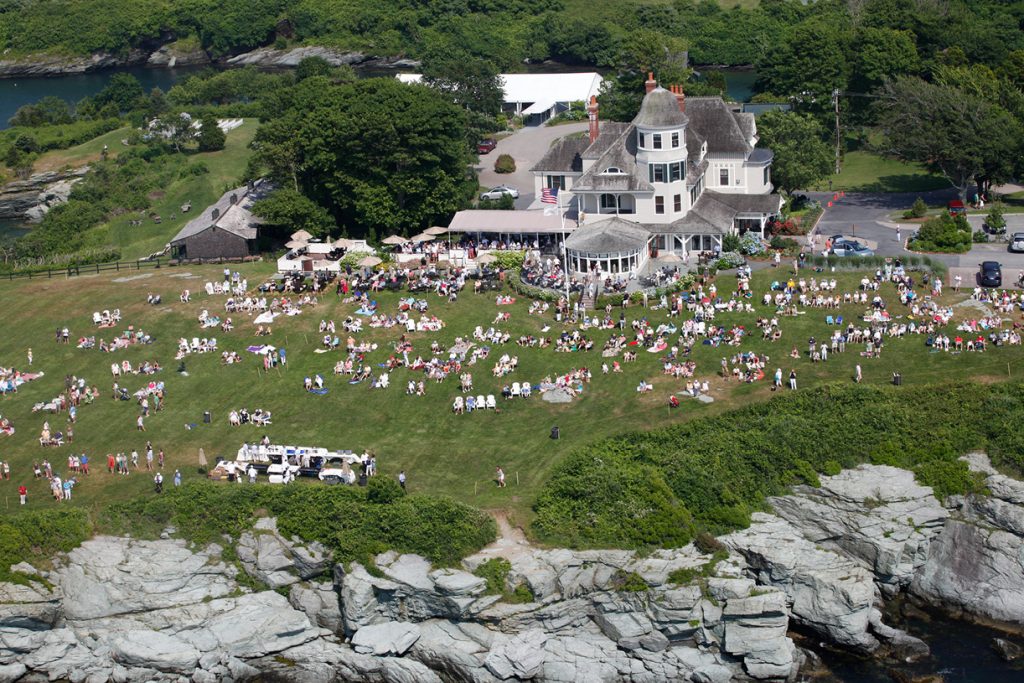
The Castle Hill Inn is the best shoreside vantage point for watching the start. © Daniel Forster/PPL
Day’s next race in 1905, a 250-mile coastal jaunt from Brooklyn to Hampton Roads, Virginia, attracted nine entries, and those who took part enjoyed the experience so much that they demanded a real ocean race – one that would take them well offshore and into blue water. Bermuda became their focus.
Yachting’s establishment were aghast, quoting Mark Twain’s famous warning: “Bermuda is a Paradise, but you have to go through Hell to get to it!” It all became quite feisty, with memorial wreaths and undertaker cards being delivered to the doorsteps of those crews who persisted in entering. But the doomsayers found themselves outboxed by Day and the enthusiastic support he received from Sir Thomas Lipton, who donated a £100 Cup for the winner, and the Commodores from the Brooklyn and Royal Bermuda yacht clubs. Three yachts, Lila, Gauntlet and Tamerlane, took the start on May 26, 1906. Lila suffered rig damage soon after and was forced to return to port, escorted by Tamerlane whose crew, which included Day, waited until the following Tuesday to restart. After an uneventful five days, they were the first to reach Bermuda, cheered in by a flotilla of local tugs, steamers, yachts, skiffs and canoes. The Bermuda Race was born.
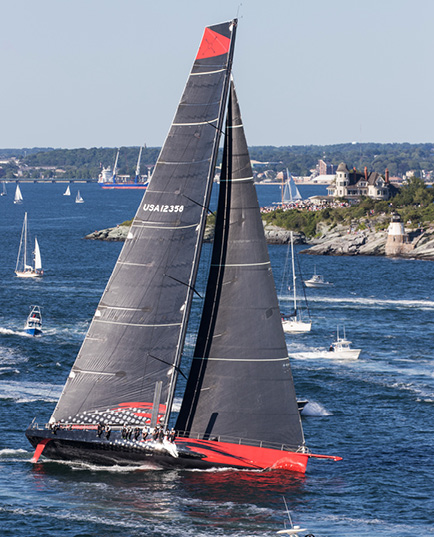
In the 2016 race, the crew of Comanche, led by skipper Ken Read, set a new elapsed time record of 34 hours, 52 minutes and 53 seconds. © Daniel Forster/PPL
Move forward a hundred years, and the mood surrounding the 50th Race was not so dissimilar to that first low-key event. The words of Fleming Day to his critics were left ringing in many ears, most notably the professionals who pulled out at the last minute, fearing a little ‘sporty’ weather en route.
The Sayers of Doom in 2016 were the weather forecasters who began predicting 35- to 40-knot winds and 18 to 20-foot seas in the Gulf Stream. If there were doubts among the less experienced, they were compounded by American TV pundit Gary Jobson suggesting that anyone in a boat smaller than 40 feet would be crazy to go!
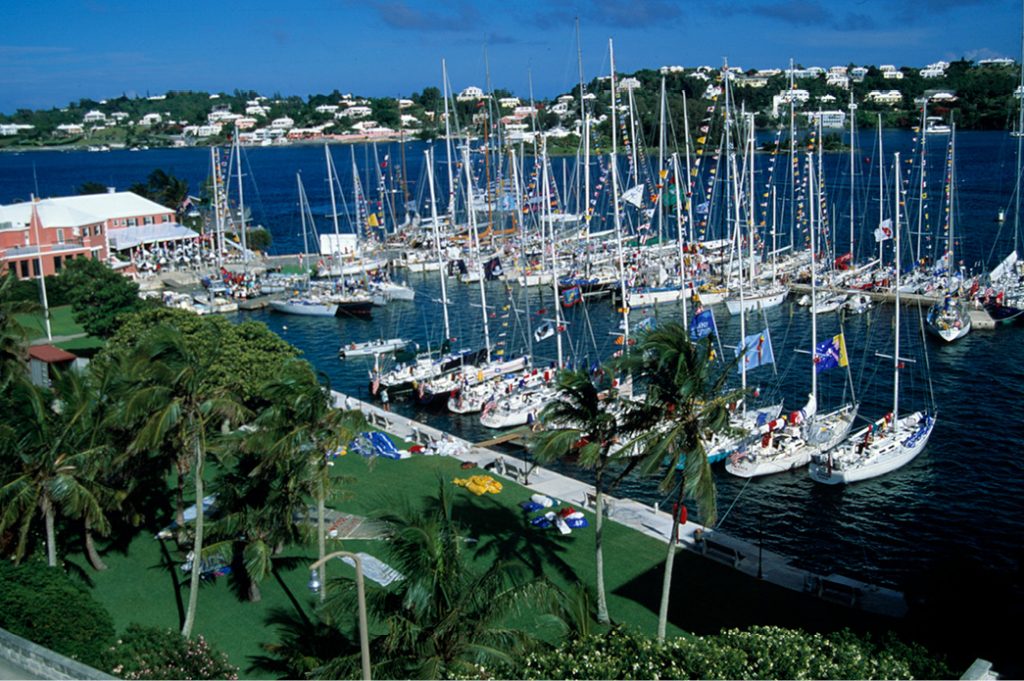
The Royal Bermuda Yacht Club has co-hosted the biennial Newport Bermuda Race with the Cruising Club of America since 1926. © Barry Pickthall/PPL
On the morning of the start, beer-talk spread faster than the Internet. Starting at the top of Thames Street, small groups gathered on docks all along Newport’s waterfront mumbling about 35-knot winds and 18-foot seas. By the time I had walked the mile down to Newport Offshore, the predictions had grown to 45-knot winds and 30-foot seas!
The biggest group to stay ashore were the professional crews. Not one boat started in the Gibbs Hill Lighthouse division, the non-amateur class. Pity, because as Ken Read, skipper of Jim and Kristy Hinze Clark’s record setting 100-foot yacht Comanche said, “They missed champagne conditions.”
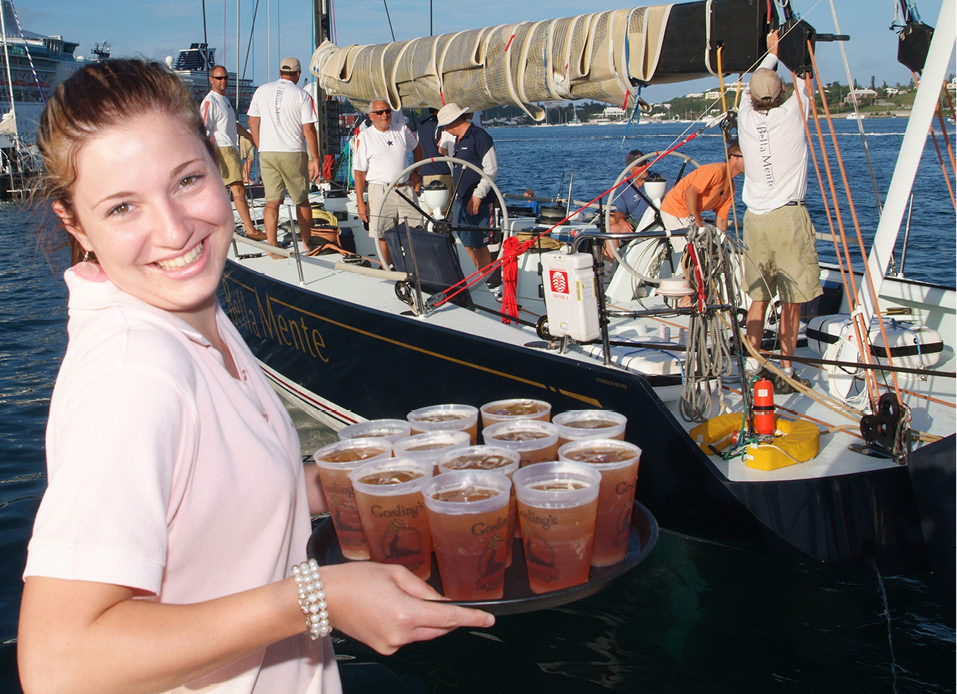
Ashley Shephard from Hamilton, Bermuda greeted the crew of Hap Fauth’s J/V 66 Bella Mente with a tray of Dark ‘n Stormies to celebrate their spectacular victory in the 2006 race. © Barry Pickthall/PPL
Chopping almost five hours off the previous best time, Read and his crew chalked up an elapsed time of 34 hours, 42 minutes and 53 seconds – a record time for this 635-mile classic that stands to this day. Describing Comanche’s performance, Read added, “We were averaging 28 to 29 knots and our highest speed was 32 knots. We had a fantastic ride.”
But this great race is not just about potential record setters. The focus has always been firmly set on the Corinthian crews who compete for the principal St. David’s Lighthouse Trophy. The list of winners during the past three decades have included the Swan 38 Gaylark, Restless, a Rhodes 41, and that serial killer Carina, a vintage McCurdy & Rhodes custom 48 that has won the St. David’s division a record three times. Other older classics to regularly take part include several wooden Concordia yawls like Dame of Sark, which have all shared some of the silverware. This year’s entry list is filled with standard production cruiser/racers from comfortable Alden, Hinckley, Oyster and Swan to Beneteau, Hylas, J/Boat, Jeanneau, Morris, and X-Yachts. Any one of them, well prepared and well crewed, could well be this year’s winner.
The 2022 Newport Bermuda Race starts from 1:00 pm on Friday, June 17, and if you can’t get afloat, the best viewing platform is from the Castle Hill Inn at Newport. For more information including this year’s entry list – with a remarkable nineteen boats in the Double-Handed Division alone! – log onto bermudarace.com. ■
PPL Photo Agency has been the official media partner to the Newport Bermuda Race and accompanying Onion Patch 3-boat team series for more than three decades, recording the yachts as they leave Newport, arrive in Bermuda and the prize-givings. Their photos, which now number more than 6,000 images starting from the first race back in 1906, can be searched online by the public and media at pplmedia.com. Take a look. You may well find great pictures of your own yacht.




